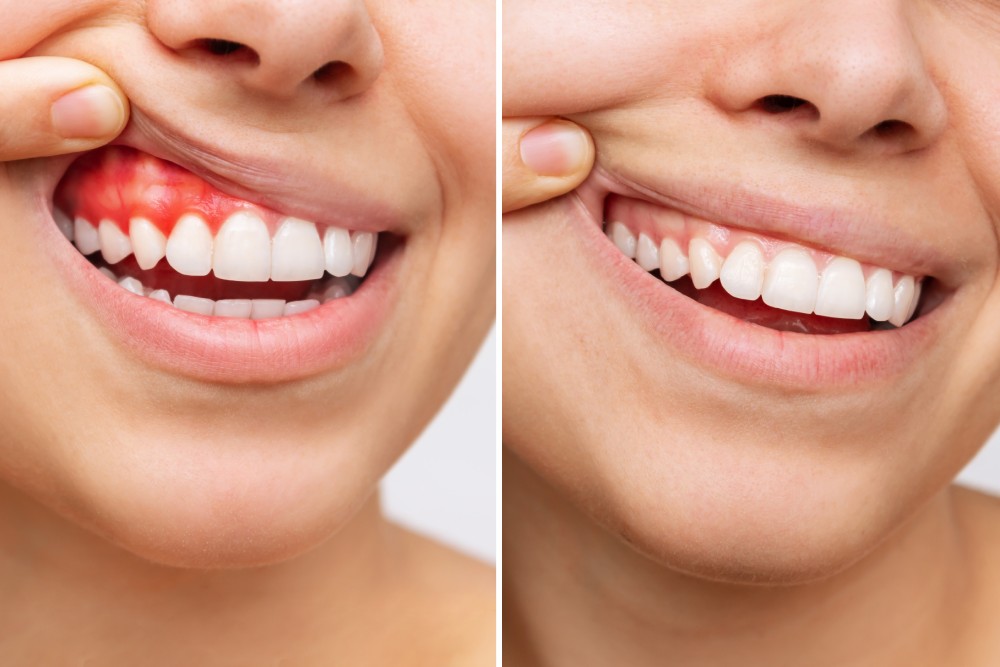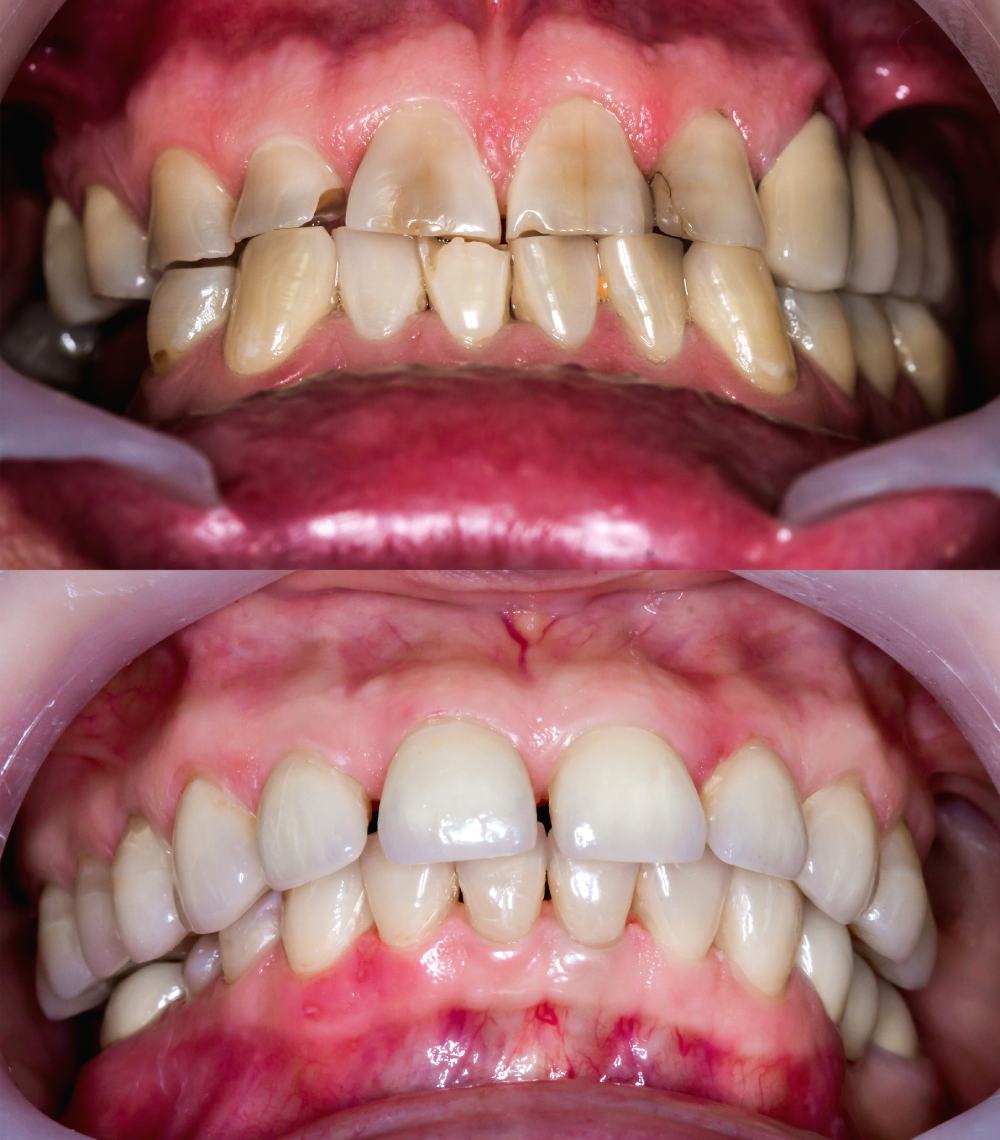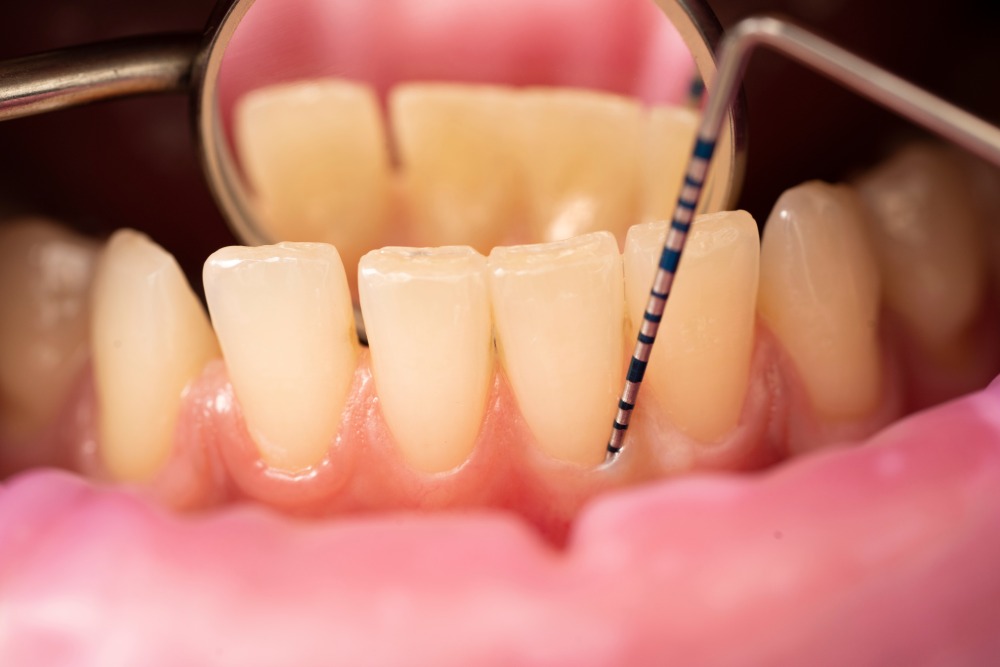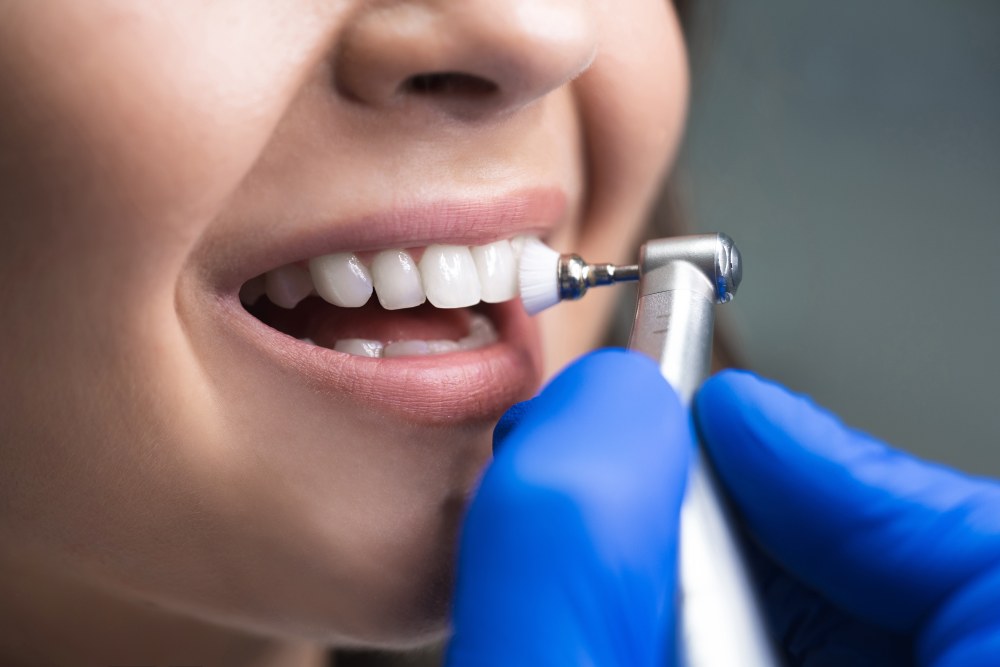
The author of the article
Boris Lipovetskiy, DMD, 31 years experience
Many people think bleeding gums or bad breath are minor issues — but they’re often signs of something more serious: gum disease.
Gum disease (also called periodontal disease) is a long-term infection that destroys the tissues holding your teeth in place. It’s one of the most common reasons adults lose teeth and can quietly affect your overall health.
When ignored, gum infection spreads deeper: from simple inflammation (gingivitis) to serious bone and ligament loss (periodontitis). That’s why early diagnosis and treatment matter.
Our patient came to us with swollen, bleeding gums and growing bone loss. Her bite was also causing trauma to the teeth and gums.
We:
Today, her gums are healthy, pink, and firm again — with no bleeding or loose teeth.
Want the same result?
Book a consultation with our periodontist and restore your smile!
What is gum disease?
Gum disease is the #1 cause of adult tooth loss.
It all begins with plaque — a soft, sticky film made of bacteria. When plaque isn’t removed in time, it hardens into tartar. Tartar irritates the gums, causing gingivitis (early gum inflammation).
If untreated, gingivitis can progress into periodontitis. At this stage, the infection breaks down bone and connective tissue, loosening teeth and creating gum pockets where bacteria hide.
But that’s not the only cause:
These factors speed up gum disease even if oral hygiene seems good.
Your gums seal off and protect the roots of your teeth.
When they break down, infection spreads — affecting not just your mouth, but your whole body. Gum disease has been linked to diabetes, heart disease, and autoimmune flare-ups.
Don’t ignore bleeding gums or bad breath — these are warning signs your body is giving you.
How Common Is Gum Disease?
Gum disease often develops silently, especially in its early stages.
Smoking increases risk dramatically — even if you brush regularly.
What to Do
Protect your smile — schedule a preventive visit today.
Symptoms of Gum Inflammation
Early Signs
Advanced Symptoms

If you notice any of these symptoms, don’t wait — get your gum health checked now.
Gum disease doesn’t heal on its own. Without treatment, infection can lead to tooth loss and affect your general health.Don’t Wait—Check Your Gum Health Now
Periodontal disease often starts silently.
Bleeding gums, bad breath, loose teeth, or receding gums usually mean the infection is already in a moderate or advanced stage. Without treatment, it can lead to tooth loss and spread of bacteria throughout the body.

Book a visit with our periodontist today—early diagnosis and therapy protect your teeth and overall health.
Why Does Gum Disease Develop?
When plaque builds up, it irritates the gums. But that’s only part of the story. Many people don’t realize their bite alignment, grinding habits, or immune conditions like diabetes make their gums even more vulnerable. It’s not just about brushing — it’s about looking at the whole picture. The root cause is plaque buildup on teeth and along the gumline, but several factors can accelerate or worsen the infection:
Control these risks and plaque won’t have a chance to harm your gums.
Protect your smile with expert care
Schedule a professional plaque removal to prevent gum disease and keep your teeth healthy and bright.
Types of Gum Disease
Recognizing the symptoms early is key to preventing tooth loss.
Gingivitis is the earliest and most common stage of gum disease. It affects the soft tissue around the teeth, causing inflammation without yet damaging the bone.
Symptoms: – bleeding gums, redness, swelling, bad breath.
Gingivitis Is Reversible
At this stage, no bone has been lost yet. With proper cleaning and professional oral care, gum health can be fully restored. Don’t ignore early signs — professional care now prevents costly treatment later.
Periodontitis is an advanced form of gum disease. It damages the bone and connective tissue that hold your teeth in place.
Symptoms – include gum recession, deep pockets, loose or shifting teeth, persistent inflammation.
Doctor's Opinion
Once gum tissue and bone are lost, they can’t fully grow back. Deep cleaning (scaling and root planing) stops the infection and protects what’s left. Early intervention is critical to avoid surgery or tooth extraction.
If your gums bleed — don’t wait. Gum disease doesn’t heal on its own. Early treatment prevents bone loss and saves your smile.
Call now to schedule a periodontal consultation
Possible Complications of Periodontal Disease
This is why treating gum disease early is so important for both dental and whole-body health.
How Is Gum Disease Diagnosed?
To create the right treatment plan, a periodontist must confirm the type, severity, and speed of progression. Here’s what the visit looks like:
A periodontist evaluates:
1. Visual Exam + Health History
We check for redness, bleeding, recession, and plaque buildup.
2. Gum Pocket Probing
Normal: 1–3 mm.
Pockets >4 mm suggest inflammation or bone loss.3. Dental X-Rays
Quick, safe images showing bone height and hidden infections.
4. 3D Imaging (CBCT)
Full 3D scans in minutes. Accurate, painless planning.

Get a personalized treatment plan from your first visit.
Gum Disease Treatment
The goal:
We use the latest technology for comfortable, precise treatment:
Each treatment is customized to fit your specific needs.
How Can You Keep Your Gums Healthy?
Daily habits:
- Brush 2× daily with a soft brush
- Clean your tongue
- Rinse after meals (herbal or iodine-based rinse)
- Floss or use an irrigator

Regular care:
- Cleanings every 3–6 months
- Regular exams
- Balanced diet: Vitamins A, C, D, E, calcium, fiber
- Avoid smoking

Your smile is worth saving. Let’s protect it together.
Once gum tissue and bone are lost, they can’t fully grow back. Deep cleaning (scaling and root planing) stops the infection and protects what’s left. Early intervention is critical to avoid surgery or tooth extraction.
If your gums bleed — don’t wait. Gum disease doesn’t heal on its own. Early treatment prevents bone loss and saves your smile.
Book your consultation today and reclaim your gum health.
FAQ
Not exactly — but bacteria that cause it can spread through saliva (sharing utensils, kissing).
Yes, especially with braces or poor hygiene.
Yes. With timely care, teeth can be stabilized and bone loss prevented.
Mild cases — yes. Advanced cases — no. If your gums bleed regularly, professional care is required.
Early-stage gingivitis — yes. Advanced periodontitis — no, but treatment controls it.
It increases the risk of implant failure. Healthy gums are essential for implant success.



